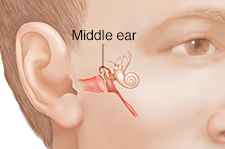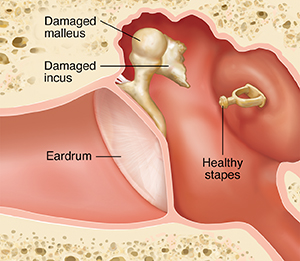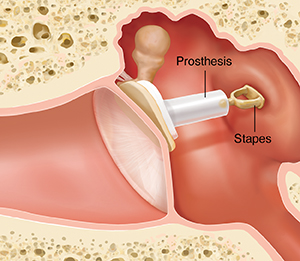Ossicular chain reconstruction can improve conductive hearing. It is also called middle ear bone surgery. It can be done to replace a damaged malleus or incus bone. During surgery, you will be given local anesthesia with sedation. Or you may have general anesthesia. Middle ear bone surgery takes about 1 to 3 hours. It is often done along with a tympanoplasty or a mastoidectomy.
Damaged malleus or incus bones
Injury or infection can damage the malleus or incus bones. Your surgeon reaches these bones by going through the ear canal. Or your surgeon may make an incision behind the ear. Your surgeon then makes an incision around the eardrum. The eardrum is held to one side. Your surgeon takes out all or part of the damaged bone.
Replacing one or both bones
The damaged malleus or incus bone—or both—may be rebuilt with synthetic material. Or it may be replaced with a manmade part. This part is called a prosthesis. Your surgeon attaches the prosthesis where needed. Then the eardrum is put back in place.




